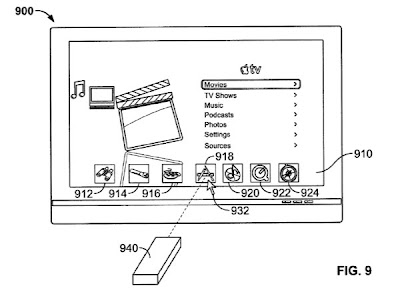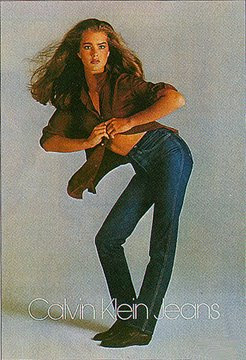Out Gaming Microsoft: Apple About to Move Edition?
I was just sitting down to write a post about our need to expand beyond the core gamer. We are really good at making games for the 2 million people who buy good games and 5 million who buy great games, but that barely covers our budget. Sure Nintendo brought more people to the game market, but they only buy Nintendo games. The tie ratios are no where near what we need to consider the platform disruptive. Then I saw the post I stole and copied below from Appleinsider.com.
Remember, Apple entered the MP3 player and smartphone markets when they appeared to be mature. All of the apps in the app store could easily run on Appletv and with incremental improvements on interface and design of the Wii mote, Apple could just skip over the hardcore gamer and pull the mainstream right in. This would not be the first time Apple the innovator borrowed a great idea. The Mac interface famously came from Xerox Parc, the iPod was introduced into a robust MP3 market and even iTunes was acquired from the outside. After all, Steve Jobs' favorite artist, Picasso did say "bad artists copy, geniuses steal." The box already has direct distribution of HD movies, television shows, Hulu and more, now it could have mass friendly games. Kind of a reverse on the trojan horse used by Microsoft. Maybe Nintendo proved something and Apple will perfect it.
Then again. . . . I could be nuts.
Apple is exploring the possibility of including a wireless "remote wand" with future versions of its Apple TV media system that would provide users with precise control over a cursor on the Apple TV screen in very much the same way a conventual mouse controls a cursor on a PC. It would also unlock three-dimensional controls similar to those offered by Nintendo's Wii controller.
The wand, which was revealed in a patent filing published for the first time this week, would control the movement of a cursor displayed on a TV screen by the position and orientation at which it is held by the user. As the user moves the wand, the on-screen cursor would follow.
Unlike the current 5-button remote shipping with the current version of Apple TV, the wand would be capable of controlling a plurality of new operations and applications that may be available from the media system, including for example zoom operations, a keyboard application, an image application, an illustration application, and a media application.
According to Apple, the Apple TV media system could identify the movements of the wand using any suitable motion detection component such as an embedded accelerometer or a gyroscope. Another approach for identifying the movements of the wand would be to determine its absolute position relative to one or more infrared modules positioned adjacent to the screen in the living room.
"The wand may include an optical component for capturing images of the infrared modules, and may calculate its orientation and distance from the modules based on the captured images," the company said. "In some embodiments, the electronic device may direct the infrared modules to identify the position of an infrared emitter incorporated on the wand, and may calculate the absolute position of the wand relative to the infrared modules."
By incorporating the wand controller into future Apple TVs, Apple would unlock a tremendous amount of capability in its set-top-box interface while blurring the lines between a conventional PC and a media system. In one example, the company shows how pressing the remote's menu button would trigger a Dock to rise from the bottom of the Apple TV screen, which users could then navigate by moving the wand from left to right.
The wand could also incorporate several new selection techniques that would reduce dependency on physical buttons such as the menu/select button on the current Apple remote.
"In some embodiments, the user may provide a selection input by moving wand in a particular manner," Apple said. "For example, the user may flick wand (e.g., move wand in circular pattern), rotate wand in a particular manner (e.g., perform a rotation of wand), move wand a particular distance off screen, or any other suitable movement of wand."
When it comes to navigating album art or other media presented in CoverFlow mode, the user could draw a circular pattern on the screen to cause the CoverFlow carousel to rotate, displaying different selectable options. Wand movements could also direct the carousel to turn in a particular direction based on the direction in which it's rotated.
When inside Apple TV's photo application, similar movements would allow the user to navigate large sets of thumbnails and make selections. However, a more powerful aspect may the ability of the wand to zoom in and out of images based on its proximity to the screen.
"To zoom out, the user may move wand away from screen such that the distance between wand and screen may be larger than the initial distance between wand and [the] screen," Apple explained. "The larger distance between wand and screen may be depicted by the position of wand relative [to its] origin. [...] In some embodiments, the user may provide an input in the z-direction (e.g., to zoom out) by providing an appropriate input with an input mechanism without moving wand. For example, the user may roll a scroll wheel, provide an input on a touchpad, or move a joystick to provide an input in the z-direction and zoom out the image of [the] screen."
Rotating the wand could also serve to rotate and skew images on the screen:
Another advantage of the wand would be its ability to trigger a keyboard application from within any of Apple TV's core applications and provide swifter input. Instead of navigating the keyboard with left, right, up, and down arrows, the "user may select a character on the displayed line by pointing wand at a particular character to place cursor over the character," Apple said. "To access other characters not displayed on a particular line, the user may select one of [the] arrows to scroll [a] line to the left or to the right. In some embodiments, the user may simply place cursor at the left or right edge of the screen to scroll [a] line."
Apple goes on in the massive 64-page filing to describe methods for using the wand to control media scrubber bars, jump around the Apple TV interface, and serve as a digital pen for an illustration application.
The May 2008 filing is credited to Apple employees Duncan Kerr and Nicholas King.
In January acting chief executive Tim Cook said, "We will continue to invest [in Apple TV], because we believe there is something there for us in the future." Cook's comments were in the context of the news that unit sales were up over three times year-over-year. He still cautioned Apple is considering the device a hobby, as Steve Jobs has often said since its release.









Comments